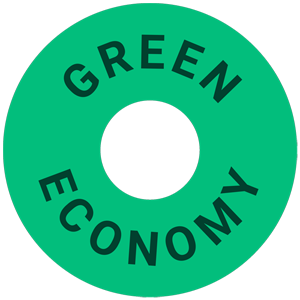The marginal cost difference of choosing the next or most efficient model will often pay for itself within a matter of weeks in lower energy consumption, so you get that initial additional outlay back incredibly quickly.
Calculating running costs
Always take a closer look at the energy label, which runs on a scale of A to G, for a general comparison of running costs.
Another way of getting a rough comparison between options is to take the product’s kilowatt rating (which should be provided in the technical specs) and multiply it by the number of hours it will be running for, which provides you with a kWh figure. You can then multiply this by the price you pay per kWh of electricity or gas for a good indication of running costs.
3. It's not just about cost savings
When preparing a business case to present to a decision-maker, it pays to take into account both the financial and non-financial benefits.
Decision makers are now much more likely to prick up their ears when they hear that an investment will save energy and pay back quickly, but that’s only the tip of the iceberg:
- Reduced carbon emissions and liabilities: Consuming less energy directly lowers your carbon footprint and environmental impact, providing knock-on benefits in the form of brand value, competitiveness and complying with existing or future regulations or customer requirements
- Increased resilience to price volatility: Drawing less energy from the grid means you are less exposed to future spikes in energy prices, which makes budget planning easier
- Reduced maintenance costs and longer replacement cycles: More efficient equipment (and the efficient use of it) usually results in a longer lifespan, increased reliability, slower depreciation and lower maintenance costs. LED lights, for example, last much longer than older forms of lighting
- Improved comfort, well-being and productivity: Heating improvements will improve comfort for staff and LED lighting improves light quality, which will increase well-being and may result in reduced quality rejects
- Increased property value: If you own your building, making energy-efficient improvements to the building fabric and building services may increase its value.
These are all examples of additional ammunition you can bring to decision-makers to persuade them of the business case.
Using the right language
The benefits you lean on most will depend on the person you’re talking to. If you’re speaking to your finance director, it makes sense to focus on cost savings, financial resilience and extended lifespan benefits.
If you’re speaking to a production manager or operations director, it may be more beneficial to focus on how the new equipment will make their life easier through improved reliability, reduced maintenance requirements and improved comfort and productivity.
If you’re speaking to a sales director or sustainability manager, you could focus more on the carbon footprint benefits.
4. Finance options
The financing options available for energy efficiency investments will depend on the specific technology and the circumstances within your business. However, generally speaking, it can be more straightforward than you might think:
- High street lenders: Most banks have now got some form of dedicated ‘green loan’ scheme in place for SMEs. Lenders have a growing appetite to finance green technology projects partly to support their own sustainability objectives, but also because they can see the returns – energy efficiency measures are reliable investments that will also improve your resilience, which makes you more lendable. Different banks will have different criteria for eligible technologies, but they generally cover most standard energy efficiency measures and renewables like solar PV
- Asset finance: Technology providers themselves are often able to offer you a tailored asset finance solution that allows you to pay as you save
- Grants: There are sometimes grants available for green technology projects from local business support organisations. Speak to us, your local Chamber of Commerce or your local authority to check if there is any support available.
The important thing when weighing up your options is to make sure the monthly cost savings from the technology are higher than the cost of repayments (ideally by a 20-30% margin, to allow for variabilities in real-life performance). This will mean your investment is effectively ‘cashflow positive’ from day one, with that margin going straight into your pocket every month until the investment is paid off in full.
5. Don't get caught in the queue
If you’re looking to install popular energy-saving technologies such as LED lighting or solar PV, bear in mind that they are now in very high demand and installers are extremely busy. For example, solar PV suppliers in Greater Manchester are already telling us that the commissioning process for solar panel systems is currently taking between 4-6 months.
Waiting lists are growing, so time is of the essence – especially if you are planning large energy investments.
Need support?
If you are seeking a trusted, local supplier for installing energy-saving technologies, use our online marketplace.
This blog was originally published on the Bee Net Zero website.








